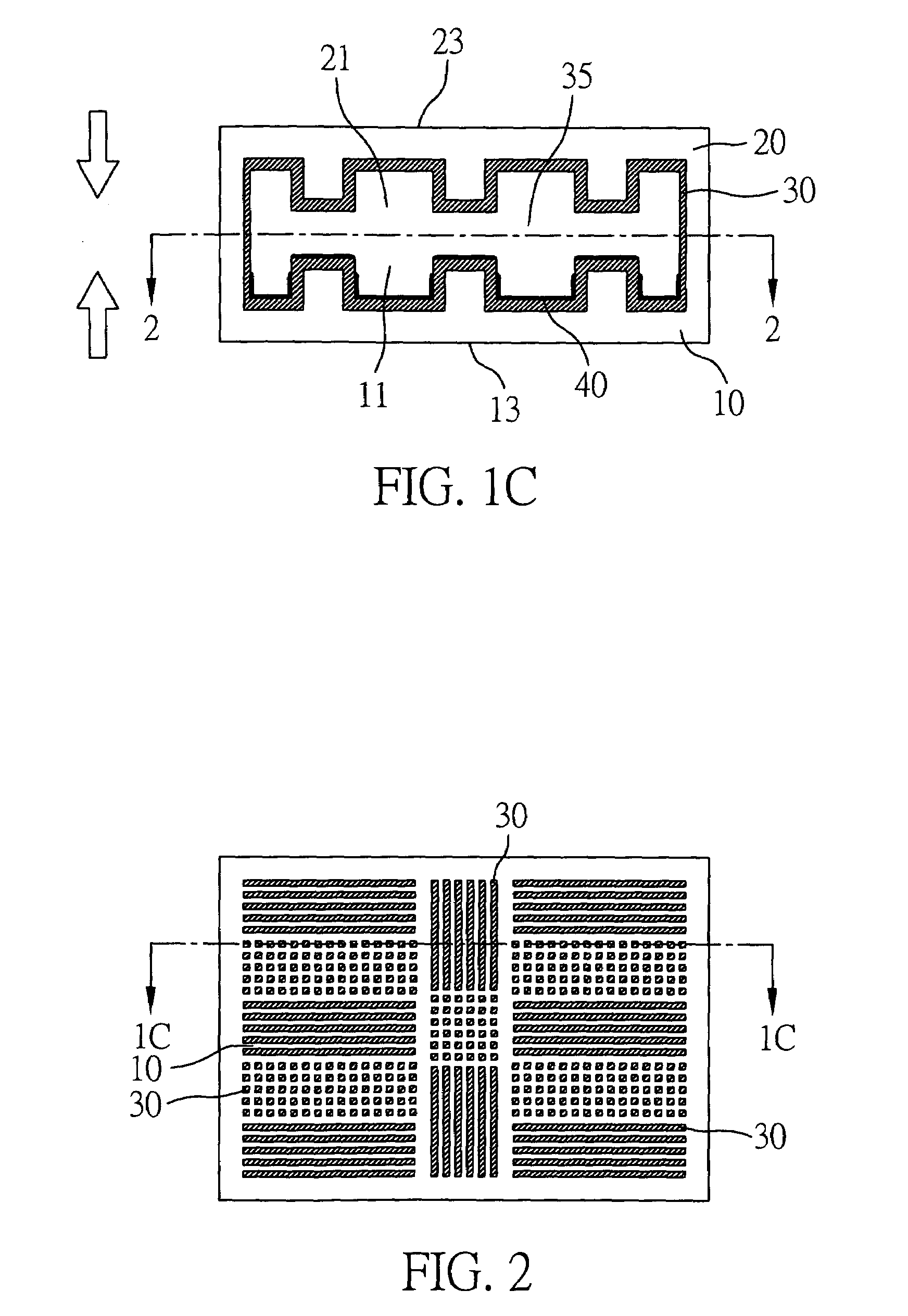Heat dissipating apparatus having micro-structure layer and method of fabricating the same
a technology of heat dissipating apparatus and microstructure layer, which is applied in the direction of lighting and heating apparatus,foundry moulding apparatus, semiconductor/solid-state device details, etc., can solve the problems of power consumption, heat dissipation, reliability, and the functionality of electronic devices, and achieve the effect of increasing the heat dissipation efficiency of these devices
- Summary
- Abstract
- Description
- Claims
- Application Information
AI Technical Summary
Benefits of technology
Problems solved by technology
Method used
Image
Examples
Embodiment Construction
[0025]FIGS. 1A to 1C illustrate the fabrication method of a heat dissipating apparatus having a micro-structure layer in accordance with the present invention. Firstly, referring to FIG. 1A, a first substrate 10 and a second substrate 20 of equal dimension are respectively provided. Both of the first substrate 10 and a second substrate 20 are made of a highly-dense metal block, and the metal block may be a highly heat conductive material such as copper, silver, aluminum, and so on. The first substrate 10 is defined with a first opening 11 having an inner wall formed with a geometrically structured pattern 12, such that differing profile heights are provided in the inner wall of the first opening 11. In contrast, a heat absorbing surface 13 is defined on an outer surface of the first substrate 10 opposite to the first opening 11. The second substrate 20 comprises a similar structure to that of the first substrate 10. The second substrate 20 is defined with a second opening 21 having ...
PUM
| Property | Measurement | Unit |
|---|---|---|
| heat conductive | aaaaa | aaaaa |
| size | aaaaa | aaaaa |
| temperature | aaaaa | aaaaa |
Abstract
Description
Claims
Application Information
 Login to View More
Login to View More - R&D
- Intellectual Property
- Life Sciences
- Materials
- Tech Scout
- Unparalleled Data Quality
- Higher Quality Content
- 60% Fewer Hallucinations
Browse by: Latest US Patents, China's latest patents, Technical Efficacy Thesaurus, Application Domain, Technology Topic, Popular Technical Reports.
© 2025 PatSnap. All rights reserved.Legal|Privacy policy|Modern Slavery Act Transparency Statement|Sitemap|About US| Contact US: help@patsnap.com



